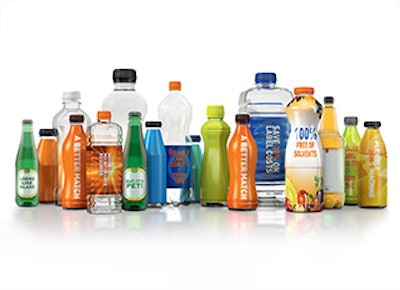
As consumers, we tend to gravitate toward products in store aisles with eye-catching packaging and labeling. Knowing this, brand owners try to make the most of the valuable real estate offered by labels to attract consumers to their products.
While generating buzz in the marketplace is critical to a brand’s success, it is not the only goal. Brand owners also look for labeling solutions that result in greater efficiencies and reduced production costs. Additionally, more and more emphasis is being placed on sustainability and minimizing environmental impact.
So what do these growing demands mean for the future of labeling?
For long-term success, manufacturers must ensure that their labels are attractive and sustainable and that their manufacturing processes are efficient. While achieving synergy between all of these labeling needs is complex, it is not impossible. Innovative technology and techniques are making it easier to accomplish.
Increase your Branding Real Estate with Shrink Sleeve Labeling
Competing for shelf space in stores and responding to consumers’ increased interest in visually stunning products requires that brand owners package their products in a uniquely attractive way, and also in a way that clearly communicates what is inside.
Of all label types, full-body shrink-sleeve labels offer the greatest potential to meet these needs. With 360 degrees of top-to-bottom print coverage, marketers can now utilize the entire package to communicate with consumers and build brand loyalty.
Additionally, shrink sleeves improve packaging design freedom, are a versatile canvas for more sophisticated graphics, and ultimately provide increased shelf impact. As a result, sleeve labeling continues to grow in popularity among brand owners, representing 17% of the global labeling market volume in 2014 – a 5.5% gain versus 2013.1
Improve Recycling with Advanced Labeling Applications
Branding and packaging differentiation is not the only essential and challenging aspect of labeling for manufacturers; sustainability is equally paramount. While many brands have made the transition to PET packaging to reduce environmental impact, few are using labels that can easily be recycled – labels that cleanly separate from their container and that use film, ink, and adhesives that do not contaminate the recycled materials. Researchers, equipment suppliers, and materials manufacturers are aware of this challenge and are working to resolve the sticky situation.
Researchers in Japan, for example, have developed glue that does not stick to the package when the label is peeled off, and materials suppliers have designed perforated shrink labels, which are easier for consumers to remove prior to recycling. This development could make a big impact on recycling in North America in particular, where the necessity of separating labels from their containers to facilitate proper recycling may not be widely known.
Additionally, more and more manufacturers are considering labelers that do not use any adhesives at all. Beyond providing the advantage of improved product sustainability, no-glue labelers stay cleaner, need less maintenance, and have a lower total cost of ownership (TCO) compared to traditional labelers.
Increase Efficiency and Flexibility with Innovative Equipment
Manufacturers are also transitioning to labeling equipment that delivers greater flexibility and maximum efficiency. TCO is impacted when a labeler cannot keep up with the pace of innovation, and older labeling solutions often lack the capabilities necessary to efficiently label today’s lightweight containers.
As containers become lighter, the labeling process requires greater precision; minor equipment issues can result in increased scrap rates and ultimately reduce production efficiency. Newer technologies can better handle the unique challenges associated with labeling lightweight packaging without the need for pre-labeling bottle stabilization by adding resistance and stability to their packages during the labeling process.
Evaluate What You Have In Place
In the coming years, innovation and creativity in the labeling landscape will continue to grow. Now is the time for manufacturers to evaluate the solutions they are using and determine if they are truly supporting their need for product differentiation, and production efficiency and sustainability.
1 Source: Alexander Watson Associates (AWA)























